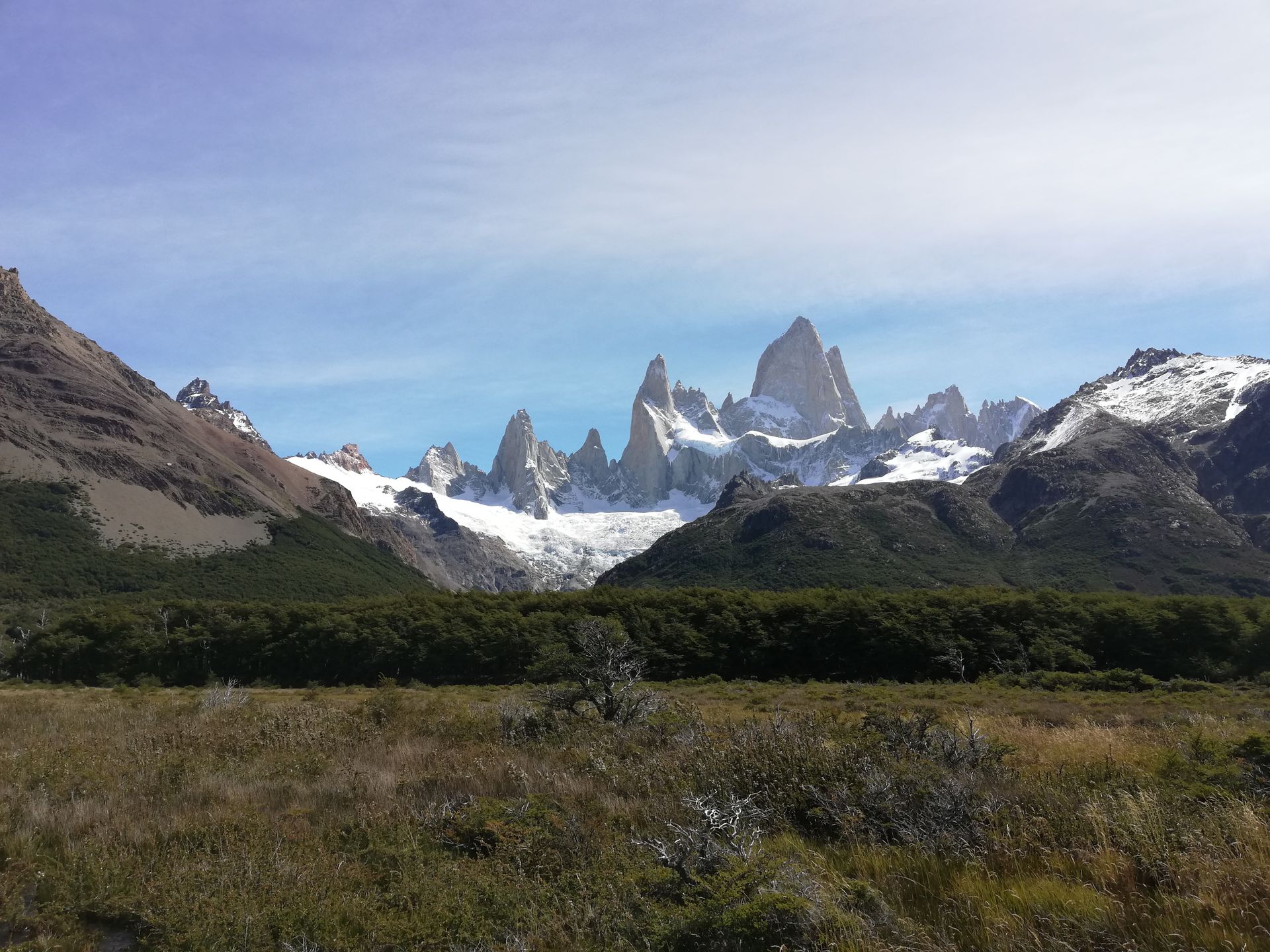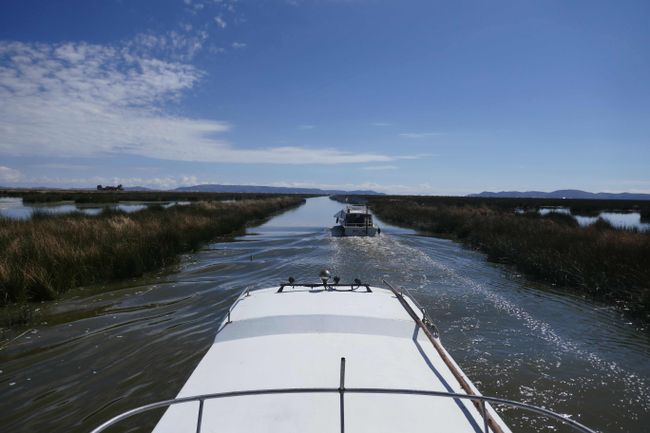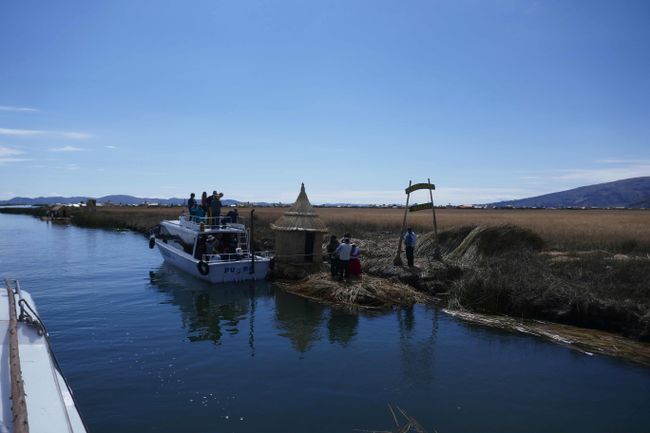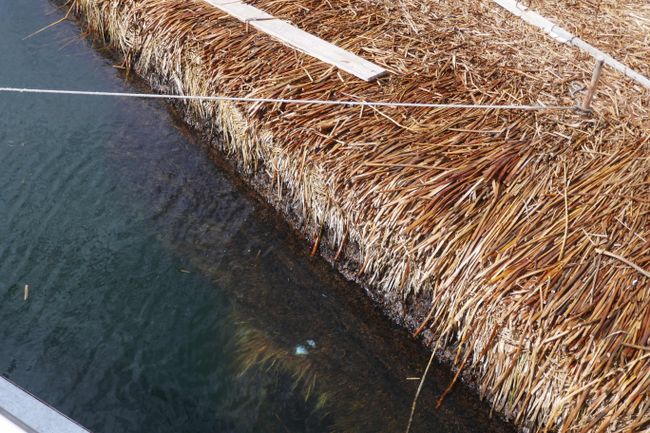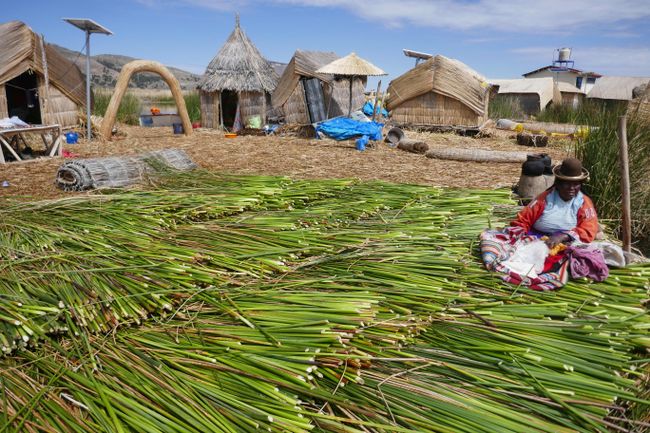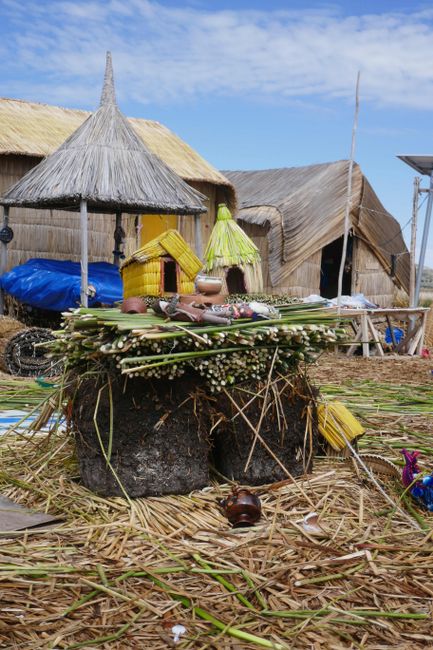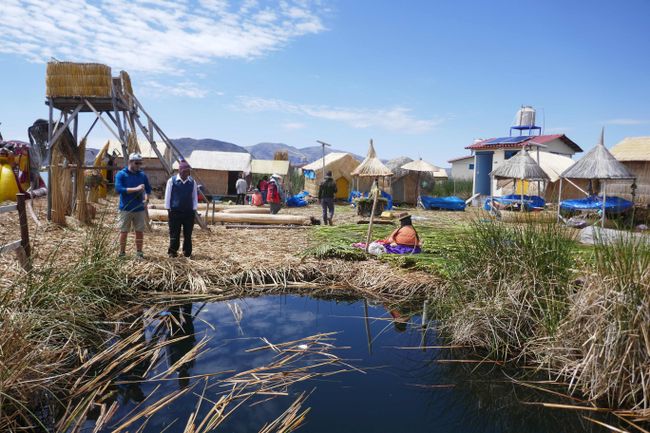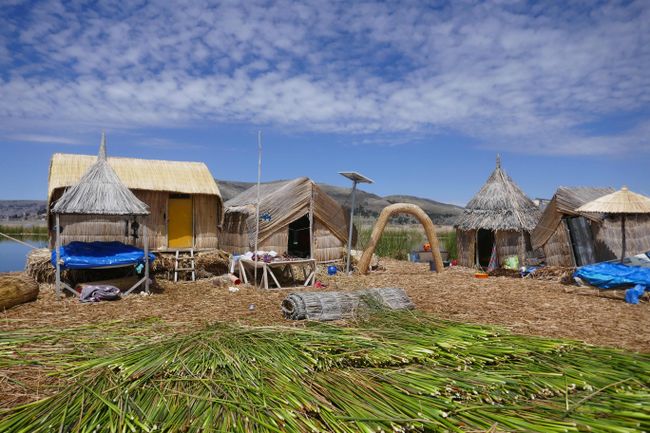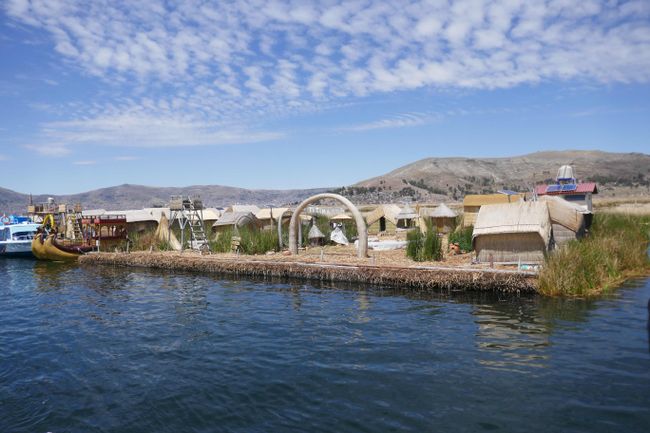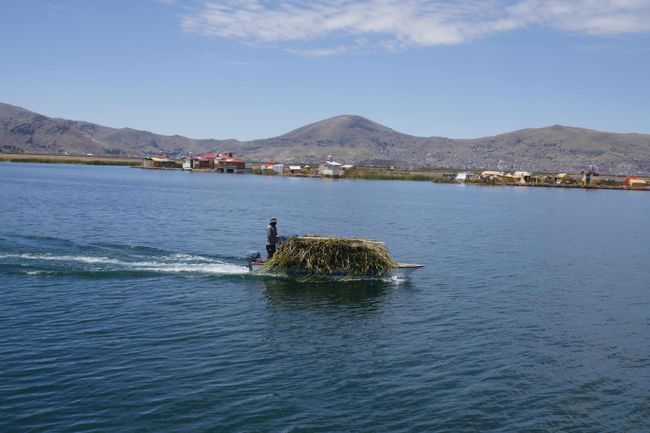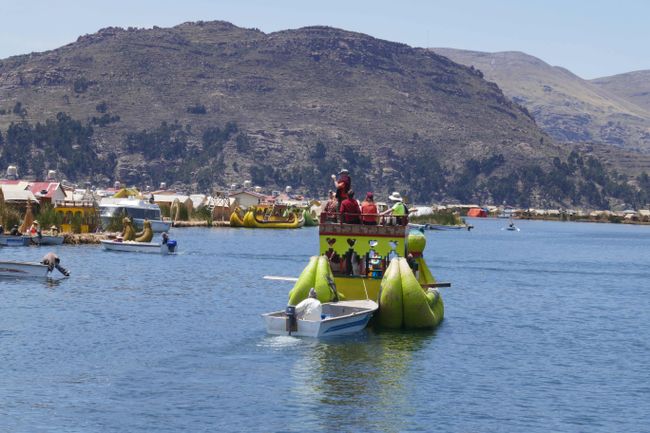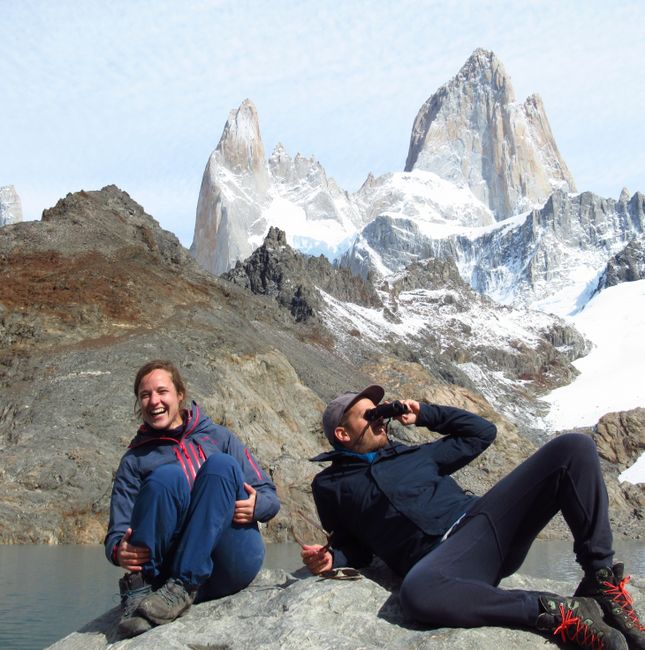
Reiseblog von Fabienne & Simon
vakantio.de/fabienneundsimonontour
F: The Urus at Lake Titicaca
E phatlaladitšwe: 02.01.2020
Ingwadiše go Lengwalo la Ditaba
It's been a long time since we were at Lake Titicaca, but I still wanted to say something about it:
As part of the journey from Puno to Amantani (the island where we relaxed for 3 days and loved it), a stopover at the Urus or Uros Islands is included as standard. It was interesting on one hand. On the other hand, it was a terrible tourist show. It put me in a dilemma.
In the past. The Urus are a people that have been living on floating reed islands on Lake Titicaca for centuries. The literal basis of life are the huge reed fields in the lake. The reeds grow with their feet in the water and, like reeds in our area, the roots and humus form a solid layer over the years. This creates whole islands in the lake, which probably could be walked on without having a rocky foundation. The initial islands of the Urus consist of floating blocks of root-humus, which are connected to each other. A dense floor of dried reeds is then placed and solidified on top of this raft. Since this layer is constantly in the water, it decomposes relatively quickly, so a new layer of reeds is placed on the entire island every two weeks. With this continuous renewal, an island can live for about 30 years.
The floating island is about the size of a quarter of a soccer field. A large family lives on it, each with a head. In the past, the houses were also made of dried reed bundles. They were round houses without a floor. They could simply be lifted up, the new layer of reeds laid out, and the little houses placed back on top. Each island had a platform about 2 meters high to communicate with each other, as well as a communal kitchen. Someone cooks for the entire island. Even their boats were made of reeds: two to three large bundles of reeds tied together in the shape of a crescent moon. That's how they lived on the lake, fishing and trading with the Aymara and Quechua on the "real" islands and on land.
This way of life ensured the survival of the people for a long time - when in danger, they simply rowed out onto the lake. There, they were left alone by the Spanish conquerors for a long time, firstly because they were peaceful and secondly because they were not perceived as a threat.
Today. Today, the Urus still live in family groups on their islands with a communal kitchen. The houses are made of wood and corrugated iron. To make it look traditional, many of them are covered with reeds. Of course, they have been using motorboats for harvesting reeds for a long time, but for tourists, each island has a traditional boat. Each island has a floating toilet house with running water and a toilet tank from the municipality of Puno. The islands no longer move on the lake - why should they - they are anchored near the reed fields. There is a floating primary school, but the children have to go to Puno for secondary school.
The lake is overfished, so they can no longer make a living from it. The symbiotic trade with the people on the mainland has also come to a halt. So today, their only source of income is tourism. Every day, they present a show of their traditional way of life to tourist groups:
Entering the islands is interesting because they are very soft. You are placed on a semi-circular bundle of reeds and the island leader explains the construction of the island and the way of life of the Urus to the group using an example. Then you are invited into a little house where the women show you their embroidery and handicrafts and you could buy something. Unfortunately, I don't need anything and unfortunately I don't like it. Then comes the ride on the supposedly traditional rowing boat, which is actually pushed by a motorboat. The ride costs an additional 10 soles, is actually voluntary, but you are gently and distinctly encouraged to take it.
Disgusting - but what else can they do?
The parent generation did not attend school in Puno, they did not learn any professions. The men can fish and harvest reeds, the women can cook, sew, and embroider. The Urus do not own land, do not have a business, and do not possess any know-how that is still in demand today. What choice do they have?
So, half reluctantly and half piteously, we also went on this stupid additional trip in the wannabe traditional tourist boat. So that they can still earn 10 soles pocket money...
Ingwadiše go Lengwalo la Ditaba
Karabo

Dipego tša maeto Peru, Peru
